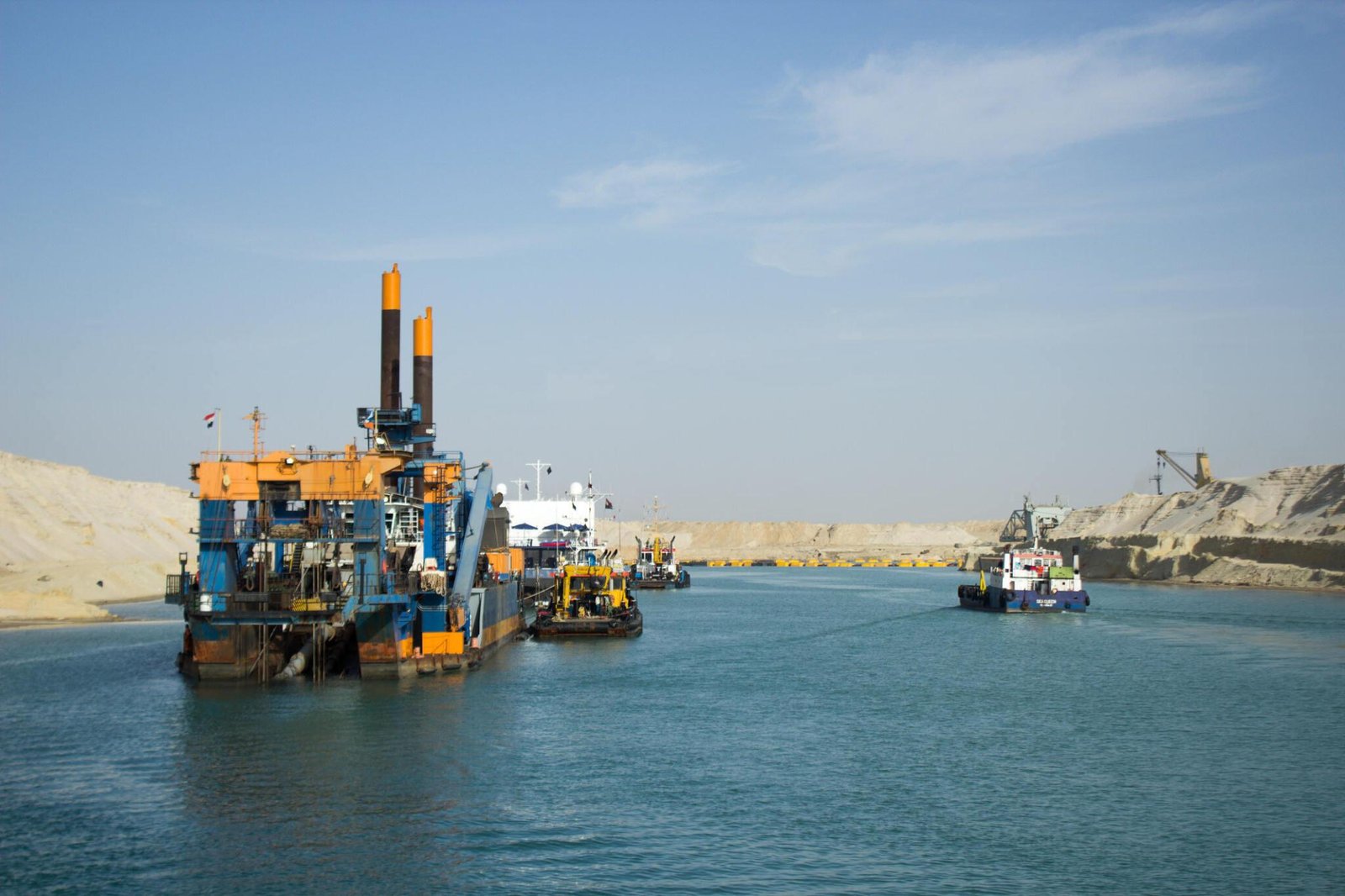The Suez Canal Economic Zone (SCZone) signed a Memorandum of Understanding (MoU) in April 2024 with the Dutch Port of Rotterdam, outlining plans to establish a route for transporting green fuel produced in the zone to European markets.
The MoU entails collaboration on the creation of a green bunkering corridor, connecting Singapore to Rotterdam via the Suez Canal. This initiative marks the first-ever corridor for green bunkering spanning across Asia, Africa, and Europe, highlighting a significant step towards sustainable energy transport solutions.
In September 2023, the Suez Canal Economic Zone (SCZONE) forged a cooperation protocol with a Dutch consortium and Rotterdam city. The aim is to attract investments for the establishment of green hydrogen production plants and facilities.
The green fuel produced will serve as a supply source for various types of vehicles. In addition, dedicated pipelines will facilitate the transportation and exportation of green fuels to European markets, aligning with Egypt’s goal of reducing carbon emissions and fostering the development of the green fuel derivatives sector. As part of the protocol, the Dutch government will extend technical support for studies related to these projects.
The announcement of the green bunkering corridor comes in line with statements from Walid Gamal Al-Din, the chairman of the General Authority of the SCZONE in February, who met with a delegation of the European Commission and discussed cooperation in current and future projects within the economic zone in various sectors, most notably green fuel in light of the European Union mechanism for amending the border carbon tax (CBAM), and the consequent necessity of concerted global efforts to support the green transformation in the many sectors of industry.
He added that Egypt is working on making its exports compatible with European Union policy following the updated environmental requirements. Gamal Al-Din also explained how the authority is providing an enabling environment for conventional and new industries and positioning itself as a hub for renewable energy.
In 2023, the SCZone signed 19 memoranda of understanding (MoU) with investors interested in establishing green hydrogen facilities. Among these, 11 framework agreements have been finalized, marking significant progress towards the implementation of these initiatives.
“This is a new industry that will scale up over the next 10 to 15 years,” said Gamal Al-Din in a press statement. “This is the fuel for the next 100 years. At first, it will be expensive, but with scalability, the price will drop.”
Egypt’s geographical proximity to Europe provides it with a competitive advantage in the industry, and can currently export green hydrogen to Europe by ship and, in the future, potentially through undersea water pipes.
Europe’s demand for green hydrogen as a fuel and for decarbonizing its industries is on the rise. Additionally, it can utilize green hydrogen to power ships in the form of ammonia or methanol. Egyptian companies are aligning their efforts with the Carbon Border Adjustment Mechanism (CBAM), a measure compatible with the World Trade Organization (WTO) environmentally conscious standards. CBAM encourages global industries exporting to Europe to adopt greener and more sustainable technologies.
The implementation of CBAM, scheduled to take effect in 2026, will involve the partial decarbonization of hydrogen in Egypt, with plans to export it to Europe. Under CBAM, exports to the EU will be subject to meeting specific carbon emission criteria.
Gamal Al-Din highlighted the demand for products from the steel industry within the SCZone running on green fuel, expressing interest in exporting commodities utilizing hydrogen as a fuel source. This shift would see Egypt exporting green products as well instead of solely green fuels.
The MOUs with investors interested in green hydrogen production are signed jointly by the SCZone and the Renewable Energy Authority. The latter facilitates land allocation for solar or wind energy generation. Gamal Eldien clarified that renewable energy for the green hydrogen projects must be sourced from outside the SCZone.
The 11 companies involved in the MOUs would require between 75 to 100 Gigawatts (GW) of renewable energy per day. In contrast, Egypt’s total daily energy consumption stands at 36 GW. To meet this demand, the Minister of Electricity has earmarked 5,000 km2 across various parts of the country for renewable energy production, aimed at generating renewable energy specifically for the 11 investors.






Comments (2)
[…] post SCZone to Establish Green Fuel Route to Europe, Bolstering Renewable Energy Sector first appeared on Egyptian […]
[…] Browse far more on google information […]